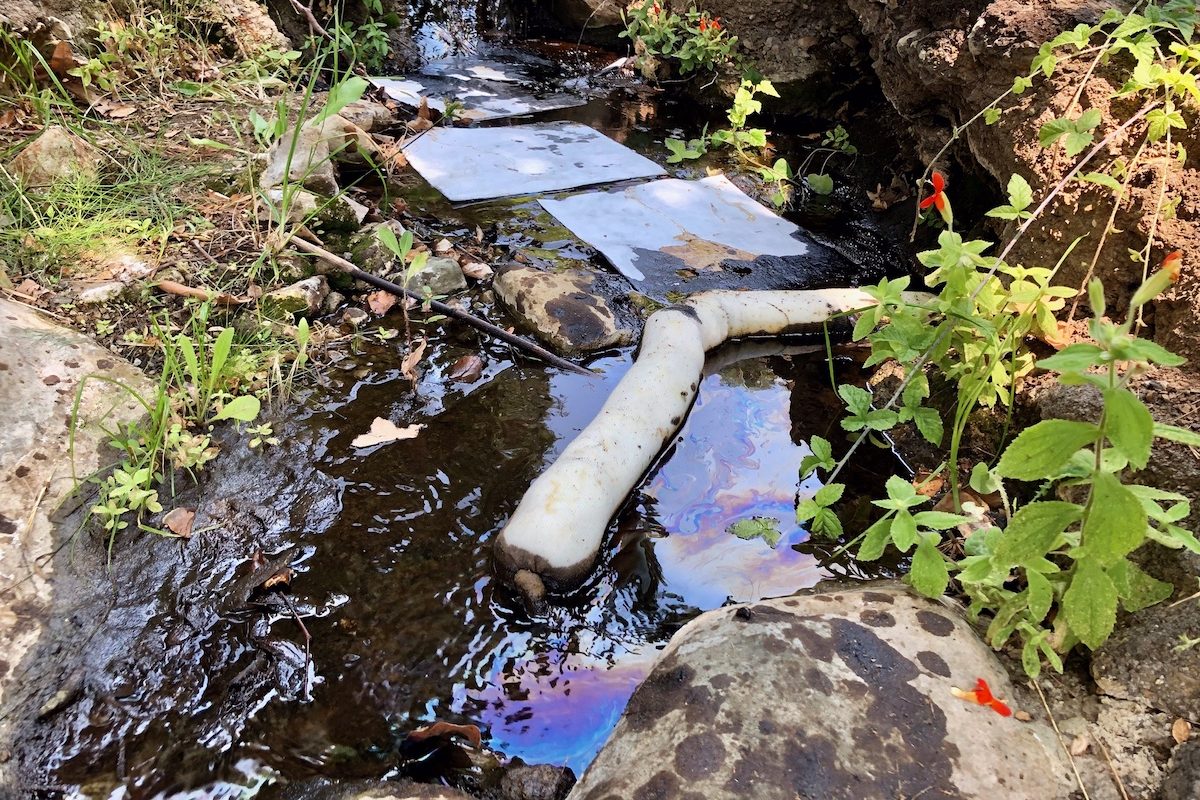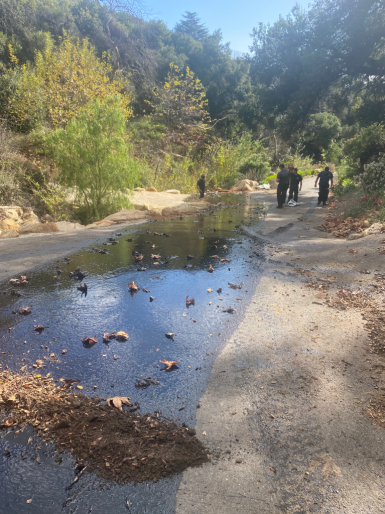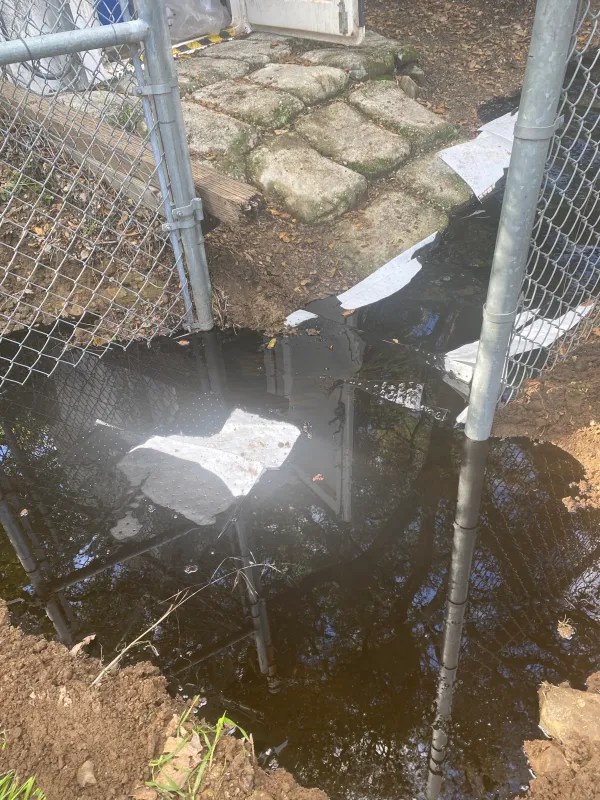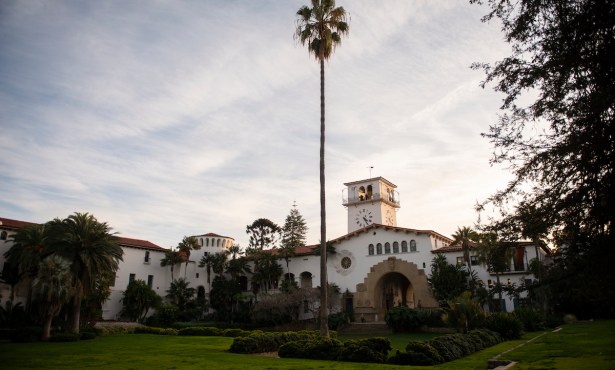Toro Canyon Oil Spills: Santa Barbara County Pleads Guilty to Criminal and Civil Charges
County Also Agrees to Pay $765,000 in Penalties and Fines Related to Leaks from Oil-and-Water-Separation Unit near Summerland

It wasn’t quite the trial of the century. In fact, it was over almost before it started. In just 15 minutes on Wednesday morning, November 29, the County of Santa Barbara’s Public Works Department was charged with two counts of criminal negligence — one felony and one misdemeanor — plus 12 civil charges for dragging its bureaucratic feet and not timely containing a long-festering oil spill seeping into Toro Canyon Creek, which runs downslope from the spill site about 1,600 feet before feeding into the ocean between Summerland and Carpinteria.
In that limited courtroom moment, the county agreed to plead guilty to two criminal misdemeanors and all the civil allegations. For its failures to contain an oil spill that first came to the county’s attention in January 2018, the county also agreed to pay fines and penalties of $765,000. About half of that will go to environmental organizations whose mission is to prevent such spills and the damage they inflict.
All this took place in the courtroom of Judge Thomas Anderle, known for his brisk congeniality and no-nonsense efficiency. On hand to represent the county in this woodshed moment was County Executive Officer Mona Miyasato and 5th District Supervisor Steve Lavagnino. There was no argument back and forth; there weren’t even any questions. When it was over, Supervisor Lavagnino — who represents the district furthest away from the once-contaminated creek — would say only, “Have a good day, your honor.”
There were a lot of firsts involved. It was the first time the county — birthplace of the modern environmental movement and long led by a solid anti-oil majority — had been charged with crimes against the environment. It was also the first time the county’s District Attorney would bring criminal charges against another agency of that self-same county government. And it was the first time the DA secured most of its evidence by submitting a Public Records Act request — a tool available to all citizens — as opposed to its more routine and specialized investigatory tools like search warrants and subpoenas.

Toro Canyon Creek Oil Spill 2020 | Credit: Lael Wageneck
Up on the fourth floor of the County Administration Building, there was considerable unhappiness with the outcome and the process. The county should not be equated, county insiders objected, with some private oil company — Greka Energy and Plains All-American Pipeline spring to mind — that cuts corners to increase its profits. In fact, the seeping oil — about 30 gallons a day — that’s caused all the trouble originated from the site of a long-abandoned oil well first drilled into the face of Toro Canyon back in 1882 by a private but now defunct oil operator.
In the late 1990s, the Environmental Protection Agency (EPA) took over the site after a spill that released 3,000 gallons into the creek. It built an improvised underground storage facility that would hold the oil seepage captured from the site while allowing the water to flow untrammeled into the creek. The EPA would pass the buck for oversight and operations of this infrastructure to the Regional Water Quality Control Board, which in turn passed it to the county in 2009. Initially, the water board paid the county for its efforts, but in 2019, those payments stopped.
At that time, the county was still reckoning with the devastation wrought by the Thomas Fire of 2017 and deadly Debris Flow of January 2018. That fire and debris flow would effectively destroy the infrastructure built by the EPA to prevent oil spills and keep the creek clean.
As early as 2018, county employees reported oil-saturated soil near the site. Then, it appeared to go away. On August 3, 2020, there was another sighting of oil-saturated soil, but it wasn’t in the creek.
At that moment, Public Works was legally obligated to report the spill to a host of other state and local agencies. Such notices would not go out for 17 days.
In September, county firefighters deployed a few booms in the creek to contain a possible spill. By January 2021, oil was in the creek.
It wasn’t until July 2021 that the county had begun work in earnest on cleaning up the creek. Prosecutors complain that Public Works was more interested in securing grant funding than getting the cleanup started. By July, more than 600 gallons had spilled into the creek, contaminating the creek bed 250 feet down stream. Numerous critters got killed.


Toro Canyon Creek Oil Spill 2020 | Credit: Courtesy
According to the prosecution’s case, the county failed to craft an emergency response plan since the oil-and-water-separation unit was first legally required. In the 10 years leading to the spill, the county failed to maintain that unit, as it should have.
Fast-forward two years after the spill to 2022, and prosecutors claim Public Works failed to address or correct many of the deficiencies identified in numerous inspection reports. When the South Coast was hit with State of Emergency torrential downpours in January 2023, the emergency response system installed in the oil-and-water-separation unit was not working. In fact, the contact numbers programmed into the emergency response system had been long disconnected.
County public information officer Kelsey Buttitta stressed that there were multiple governmental agencies at various state and local levels with oversight and jurisdictional say-so over what happened on Toro Canyon Creek. This, she said, made for a very confusing regulatory and oversight situation. Other county insiders say 2019 — on the heels of the Thomas Fire and 1/9 Debris Flow — was an exceptionally bad time to foist new regulatory costs and responsibilities onto Public Works. Confusion, they said, was inevitable. And confusion, they insisted, is not criminal.
When the DA’s Office initially started demanding documents showing what Public Works knew and when, the DA’s deputies — Morgan Lucas, Chris Dalbey, and Brian Cota — kept open the possibility of criminal prosecution. They wouldn’t know until they saw the records. The County Counsel balked; the DA could get a search warrant if it intended to file criminal charges.
Ultimately, the county would spend $1 million hiring three separate law firms to resist the DA’s demand for documents. The county would spend another $700,000 cleaning up the oil spill found in 2020. Since then, the county had authorized the $3.72 million for a new oil-and-water-separation plant for Toro Canyon Creek.
DA John Savrnoch stressed that this case highlights how his office would prosecute anyone who violates environmental laws “whether they are an individual, corporation, or county entity.”
Supervisor Das Williams, in whose district Toro Canyon Creek lies, issued a statement saying, “Replacing this facility protects the County against future discharges in Toro Canyon and is the right thing to do.”




You must be logged in to post a comment.